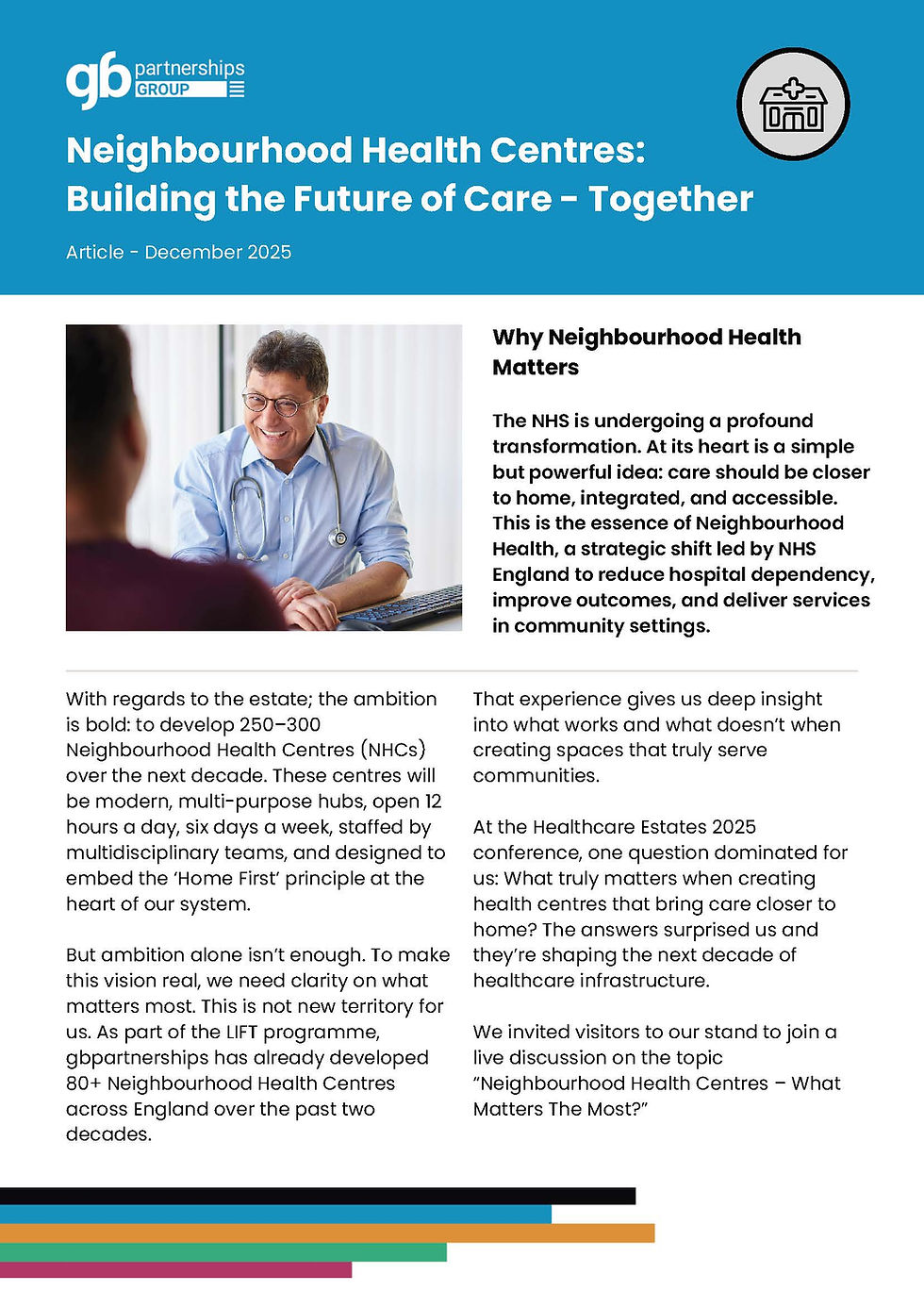5 steps to developing your ICS Estates Strategy
- gbp group

- Dec 2, 2022
- 2 min read
Infrastructure planning is fundamental in the move towards building strong and effective Integrated Care Systems, it also acts as a key enabler to delivering high-quality patient care.
From well-designed facilities in the right location, to the installation of technology and equipment, effective infrastructure planning can support local systems in adopting new ways of working and enable effective change to service delivery.
With the pressing requirement for ICSs to have an Estates Strategy in place by end of March 2023, we’d like to share practical insights and a simple 5 step approach that we have developed through successfully delivering over 50 NHS estates strategies and infrastructure planning projects.
gbp’s key insights:
Understand the clinical and service model. Work with commissioners and service leads to ensure estates is responding to the clinical need and model.
A whole system approach. Before embarking on your estate’s strategy, it is key to establish a strong governance structure that brings together key partners and to develop your brief.
Relationships and collaboration. Top down and bottom-up approach, take people on a journey. It takes time to build relationships and develop plans, so starting early is vital.
It’s an iterative process. Strategic planning is a step-by-step process that requires input from multiple teams.
Robust planning is key. It has to start with a consistent baseline and evidence base.
Infrastructure is a catalyst and an opportunity to support service planning, and drive efficiencies. Good infrastructure enables a seamless response to care requirements and changes in demand.
Our 5 Step Approach:
Step 1: Estates and service baseline, map current assets and services. Visualise potential areas of opportunity, supporting new clinical and service models and highlight gaps (hot spots) in current provision.
Step 2: Demographic Analysis. Identify areas of particular need and expected population growth and change. Step 3: Workforce Analysis. Gather the information needed to plan effectively and consider broader estate and technology requirements for primary and community care workforce. Step 4: Capacity and service modelling. A detailed capacity modelling exercise for current and future patient growth, highlighting where there is capacity in the system and where there could be pressure on the system. Step 5: Priority and opportunity areas. Develop a clear roadmap of investment to maintain, renew and develop the infrastructure. An investment pipeline will support the system in adopting new ways of working and enable effective change to how services are delivered. Align infrastructure priorities and opportunities with clinical and service models.
‘Estates are so much more than buildings. We must move to a model that makes estates a catalyst for integration rather than a barrier to it.’
The Fuller Stocktake Report









Comments